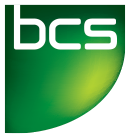Lead a session at SPA
Session formats
You can propose whatever sort of session you want. That is why the box on the submission form is free text.
Below is a guide to some of the session types that have traditionally made up the conference, but don't feel constrained to stick to these. Obviously when we put together the final programme we'll need to impose some sort of structure in terms of timings etc, but submit whatever you like and we'll do our best to make up a programme schedule from the best proposals.
Workshop
75 or 150 minutes
Interactive, structured session in which participants work on a topic and try to produce some conclusions (which are made available to other SPA participants) or at least try to advance their thinking and ideas on the topic.
Workshops may take many different forms and submitters are free to propose their own structure and process. It is very important that proposals are explicit about the process that will be followed.
Tutorial
75 or 150 minutes
An instructor led session on a clearly focussed topic, probably introducing the audience to a new technique or technology. For example a tutorial could be aimed at experienced project managers, or introduce developers to a new programming language.
You should have a clear idea of what insights your participants will take away, and why they will find these interesting. While tutorials are expected to contain a certain amount of formal presentation, you should try to incorporate some interaction between participants, for example by including practical exercises.
Long Tutorial
Up to 330 minutes
A longer, interactive learning session on a clearly focussed topic, normally run on Sunday before the main conference begins. Contains some presentation material, but must also incorporate practical exercises or interaction between participants.
Goldfish Bowl
Normally 75 minutes
A structured discussion format. Goldfish bowls generally require an initial seed group of four or five specially invited participants, with the rest of the participants beginning as the audience and then swapping in and out with the participants.
A goldfish bowl provides an effective means of exploring the breadth of opinion on a given topic. The session is started by a small discussion group of specially invited participants, with the rest of the participants forming an audience. Spare places in the discussion group are available, and members of the audience may take up these places when they feel they have a contribution to make. Members of the discussion group leave their places when they have had their say, making room for new participants. The session should produce documentary output of the conclusions reached, typically in the form of a poster.
Case Study
Normally 75 minutes
A case study session aims to describe real-life experiences and lessons learnt in a real project, maybe when trying to implement a particular technique. The experiences described can be drawn from any aspect of software development or related projects. What went wrong and why (this is the most interesting part!); what went well and why; what lessons have been learnt from the experience?
Simulation
75 or 150 minutes
Reflection on or experimentation with complex real-world environments facilitated by means of a simulation, role-play or games.
Given the complexity of the real-world environment in which we practice software, it is often not possible to reflect clearly on the way we work or to expweriment with new approaches. Using simulations and games howwever allows us to think about these situations with increased clarity. A simulation leader will be responsible for producing a clear and concise summary of the purpose, rules, and assumptions of the game. Some work on reflecting on the results of the game and its implications for real-world practice should also be included. The output from the sessions is likely to include both summary results from the simulation and a summary of its real-world implications.
Think Tank
Normally 75 minutes
A small group of people meeting to solve a particular problem or to find an agreed position on some issue. Think-tank sessions are intensive, focused and produce concrete outputs.
Think tanks should produce concrete output in the form of a poster for other conference participants. The session leader is responsible for the process of the session, for any materials that may be needed, and for ensuring that the poster is produced.
Informal Sessions
There's also the chance just to break out an informal discussion about a topic close to your heart. Perhaps try one of these:
- Sofa Sessions: Laid-back chats, discussions and brain-storming on a pre-arranged topic.
- Virtual Sessions: A session taking place in virtual reality making use of the internet, participants' laptops and the wireless network.
- On the Edge Sessions: Experiments in ways of working, interacting and transferring knowledge.
- Multi-Topic Sessions: Sessions that contain a number of topics, devoting a short time to each, in order to keep the level of energy and interest high throughout.
There will also be opportunities to organise Birds of a Feather (BoF) sessions during the conference. These informal, focused sessions do not need to be proposed in advance but will be solicited from registered participants a few weeks before the conference begins as well as during the conference itself.
